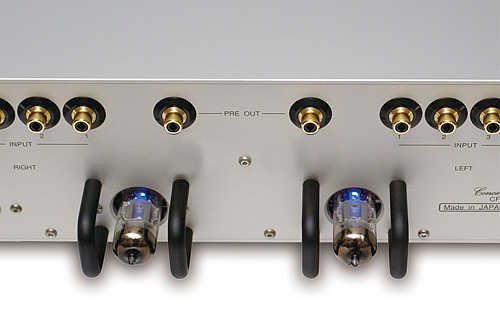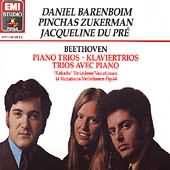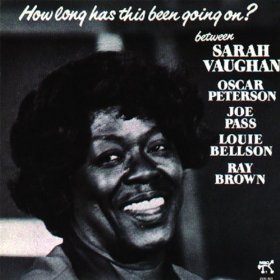The Concert Fidelity CF-080LSX2 Hybrid Preamplifier
|
The Concert Fidelity CF-080LSX2 Hybrid Preamplifier |
|
For The Love of Music! |
|
|
|
February, 2012 |

It was at the CES in 2007 when I got my first introduction to Concert Fidelity, a Japanese high-end audio electronics company. They were in room 1604, and the sound was outstanding. This suite featured their ZL-120 mono amplifiers and CF-80 preamplifier, driving the Venture Excellence loudspeakers to a degree I would nominate as memorable. I recall the sound being wonderfully inviting, non-fatiguing and very pure. I knew that Concert Fidelity was something very special and knew I had to keep an eye on. Since then, I have heard Concert Fidelity at many different trade shows with an assortment of loudspeakers and no matter the choice, they always achieved stellar sound. Finally, I simply had to see how their products would perform in my system. So I met with Hajime Sato, vice president of Concert Fidelity, at the 2011 CES and he agreed to send me the CF-080LSX preamplifier for a formal review.
Masataka Tsuda, founder and chief designer of Silicon Arts Design & Concert Fidelity, has over thirty years of experience in vacuum tube and solid-state amplifier design. Simply put, he’s a master of his trade. Tsuda san got the audio bug very early in his childhood. He built an amplifier when he was only 10 years old. It’s also remarkable that at such a young age he was reading magazines about radio technology instead of reading (Manga) comic books like most other kids. Also at ten, he was able to read circuit schematics. At age fourteen, he received certification in radio technology and he built a receiver for a ham radio. However, it was in his high school years when he really developed an interest in music and became obsessed with building vacuum tube amps. He built them using a variety of different tubes, including EL-34’s, 6L6’s, 6B4G’s, 1619’s, 211’s, 845’s, 300B’s, 2A3’s and 45’s. Solid-state also became very interesting to him after he was able to get good results with a high-voltage IC driver he designed for his favorite 1619 tubes. Shortly thereafter, MOSFETs became available and took the place of the 1619. He liked the results and started to design solid-state amplifiers as well. The circuitry of his solid-state amp would become the basis for the Idigo-90. It was his first commercial effort marketed several years later in 1993 under the Silicon Arts Design brand.

“Less is more,” Tsuda san believes in circuit and layout technology. His work is based on the Einstein philosophy that “… things should be as simple as possible, but no simpler. He believes the true depth of musical expression can only be experienced through a circuit that does not try to artificially manipulate the signal in any way. This is the basis of Tsuda san’s proprietary Direct Signal Path Technology (DSPT). All circuits, selected parts, and layouts are chosen so that all unnecessary compensatory circuitry can be eliminated. The simplest circuitry, he contends, will create the least amount of signal degradation. The result of his perfectionist drive for simplification is amplifiers of extreme transparency. They share the magic of the very best SETs without their weaknesses. The entire signal path is remarkably short. All input signals run parallel to the ground line and are processed on a single circuit board without passing through any mechanical switches or connecting wires.
The CF-080LSX2 is a hybrid design linestage, an upgraded version of the CF-080LSX. It features the state-of-the-art DC-DC converters in the critical power supplies in the input and volume control stages. Unlike linear converters, according to Tsuda san, this Japanese made DC-DC converter provides complete electric isolation between what comes before and after. It makes the preamplifier immune to AC related noises and lowers the overall noise floor. In addition, resistors in the input and volume control stages were replaced with expensive ‘chip’ resistors. The layout of the high voltage power supply circuit and the ground level were revised. These upgrades made this already world class reference preamplifier even better.

The CF-080LSX2 uses a solid-state input stage. Input selectors are analog switches which incorporate an analog solid-state volume control for its sonic quality. The linestage circuit uses a pair of 12AU7 dual triodes in cascade mode per channel. A pair of 12AU7 dual triodes is located on the lower back panel and protrude from the rear panel and offers a rather eccentric look to this preamplifier.
Tubes are easily accessible for tube rolling. Tsuda san has succeeded in shortening the entire signal path to only four to five inches. All input signals run parallel to the ground line and are cleverly processed on a single circuit board without passing through any mechanical switches or connecting wires. Concert Fidelity calls this Direct Signal Path Technology. Tsuda san explains, even if you are building a simple input circuit, its benefit will be negated by a volume control circuit if you use a large stepwise attenuator with resistors or a large potentiometer. The attenuator circuit must also be physically small. This is why he implemented an electronic volume control using special hardware and writing his own codes. This is the result of many years of in-house development. He also utilizes an EZ81/6CA4 rectifier tube as plate voltage for the output stage.

The CF-080LSX2 is single-box, finished in a simple elegant style with a classy pearl anodized coating on the aluminum chassis. The layout of the front panel is appropriately simple. It has four toggle switches for input selectors and a fifth toggle switch for the mute function. On the right side is a rotary volume knob with a digital volume display in blue LED. Attractively, it comes with a solidly built small aluminum rectangular volume control. The left rear panel has the power on-off switch and a standby – operation toggle switch. This switch puts the vacuum tube gain stage into standby (off) or operation tube (on) mode. In standby position, the power supply to the vacuum tube section is turned off. When this switch is in “on” position, the vacuum gain section is on and mute is in effect for about 20 to 25 seconds. Below the standby switch there are ground/lift switch so it is possible to float the ground and ground terminal chassis grounding. There are four inputs and one pair of outputs plus a record output terminal, all are single-ended.
The CF-080LSX2 replaced my reference Karan Acoustics dual mono MKIII preamp. It was a breeze taking it out of the box, as it weighs only 18.7 lbs. As expected, the tubes were shipped separately had to be installed. First, the rectifier tube (6CA4/EZ81) in the power supply section inside the chassis had to be installed. This requires 14 hex screws to be removed. Thoughtfully, it comes with two white soft cloth gloves to handle the tubes and an Allen wrench. Opening the top panel I could see that the layout execution was exceptional. After installing the EZ81 and reinstalling the 14 hex screws, I had to install the two 12AU7 tubes. They were very easy to install as the sockets for these tubes are accessible in the back of the chassis. It comes with the Pinnacle 13D5A tubes that have already been broken in for 100 hours on the CF-080LSX2. The review sample was not supplied with a power cord so the manufacturer encourages the user to experiment with an aftermarket power cord. I chose to use my reference ASI power cord. Finally, I did make one small adjustment to Tsuda san’s setup. I used a set of Pyon Sound Spira II Ultra Tuning Feet to assure even more exceptional sound.
The Sound: The Music!
After a couple of hours of warm up, the CF-080LSX2 was ready for business. I could tell immediately its highly transparent character was good news. I started my review with the supplied Pinnacle 13D5A tubes. It was strikingly transparent and detailed, revealing lots of information and sounding extremely natural. Lately, I’ve been listening to a great deal of chamber music. It didn’t matter whether I was listening to Mozart or Beethoven; all of it sounded rather spectacular heard through this most amazing preamplifier. Out of the box, and about 150 hours of burn-in, the soundstage was beautifully rendered and the overall sound was open and highly transparent. However, around the two month mark, I would have preferred a slightly weightier and fuller mid bass which I thought would arrive via burn-in. It did not. Therefore, I decided to try tube rolling to see if I could get an even better sound out of this gem. In fact, Tsuda san encourages tube rolling with NOS tubes. This is another thing that makes owning tube gear fun. I contacted Hajime Sato and explained to him the sound I was looking for and he kindly sent me pair of the Seimens E82CCs to try out. If I had had more time I would have loved to experiment further with more tube rolling.
To my ears the Siemens were spot on. The Siemens added a touch more solidity and a weightier low-end presentation accompanied by a superb tonal balance. This proved to be my cup of tea. The CF-080LSX2 sounded superb paired with either my reference Karan or the new incredible sounding Reimyo KAP-777 stereo amplifier (under review).  The CF-080LSX2 offered me a closer emotional connection with all types of music. Listening toBeethoven: Piano Trios, “N0.1 in E flat Op.1 No.1” [EMI 0946 3 50798 2 1] by Daniel Barenboim, Pinchas Zukerman, and Jacqueline du Pre, was an very credible experience. I was especially taken by the beautiful second movement, the Adagio Cantabile. It rendered remarkably natural string tones while maintaining a very open and highly dynamic presence. With solo performers such as one of my favorites, Mstivlav Rostropovich playing J.S. Bach’s Cello Suite “No.3, BMV 1009” [EMI 7243 5 553665 2 6] the sound was rendered masterfully. It fleshed out the subtle details of pitch variations, and bowing textures were slightly more apparent than I was used to, making it sound closer to a live performance.
The CF-080LSX2 offered me a closer emotional connection with all types of music. Listening toBeethoven: Piano Trios, “N0.1 in E flat Op.1 No.1” [EMI 0946 3 50798 2 1] by Daniel Barenboim, Pinchas Zukerman, and Jacqueline du Pre, was an very credible experience. I was especially taken by the beautiful second movement, the Adagio Cantabile. It rendered remarkably natural string tones while maintaining a very open and highly dynamic presence. With solo performers such as one of my favorites, Mstivlav Rostropovich playing J.S. Bach’s Cello Suite “No.3, BMV 1009” [EMI 7243 5 553665 2 6] the sound was rendered masterfully. It fleshed out the subtle details of pitch variations, and bowing textures were slightly more apparent than I was used to, making it sound closer to a live performance.
 Also, listening to vocals was a touch more three-dimensional. I was drawn into listening to more vocals than ever with the CF-080LSX2. Female vocals flowed more naturally and I just had to listen to one of my favorites, Sarah Vaughan’s “You’re Blasé” [JVCxr-0038-2]. It was rendered beautifully; the immediacy and solidity of her rich soulful voice had slightly more naturalness and openness than with my Karan. I could listen to Sarah all day long; it didn’t matter which tracks or albums.
Also, listening to vocals was a touch more three-dimensional. I was drawn into listening to more vocals than ever with the CF-080LSX2. Female vocals flowed more naturally and I just had to listen to one of my favorites, Sarah Vaughan’s “You’re Blasé” [JVCxr-0038-2]. It was rendered beautifully; the immediacy and solidity of her rich soulful voice had slightly more naturalness and openness than with my Karan. I could listen to Sarah all day long; it didn’t matter which tracks or albums.
The Concert Fidelity’s effect on my system’s spatial performance was equally outstanding. Listening to concertos or orchestral music was a standout; I simply had to put on Dvorak’s Cello Concerto in B Minor, performed by the master Gregor Piatigorsky and the maestro Charles Munch conducting the Boston Symphony Orchestra [JMCXR-0014]. The system created a huge, seamless holographic soundstage that was wide and deep, stretching to well outside my speakers and beyond my listening room’s front wall. In terms of perspective, the CF-080LSX2 recreates music on a stage that never sounded too distant or close. The improved width and depth demonstrated once again what tubes and hybrids are so capable of. While showing off its three-dimensional capabilities, the CF-080LSX2 never once swayed away from sounding natural and detailed, without nary a hint of glare. The CF-080LSX2 was easily able to handle the dramatic and powerful heights of the full orchestral crescendos. From top to bottom and from the softest pianissimo to the most explosive fortissimo, it performed effortlessly. At the same time, the CF-080LSX2 preserves the playing of the soloist and the integral balance between the cello and the orchestra superbly.

Personally, I feel as if my listening room has been graced by one of the best preamplifiers these ears have heard. It’s a true reference product and I tip my hat to Tsuda san and the team at Concert Fidelity. I have chosen The CF-080LSX2 preamplifeir as my 2011 “Most Wanted Component” of the year! Highly recommended!

![]()
Specifications
Inputs: 4-Line Level Inputs (RCA)
Input Impedance: 100kohms
Outputs: 1-Line Level Output (RCA)
Gain: Selectable between 6dB and 12dB
Tube Complement: 12AU7 (2) for gain (tube-swapping possible), 6CA4 (1) for rectification
Others: Remote volume control
Power Requirements: (100VAC / 50~60Hz), 110 120VAC / 60Hz, (220-230VAC / 50Hz), (240VAC / 50Hz)
Dimensions: 450mm (W) X 100mm (H) X 310mm (D)
Net Weight: 8.5KG
Price: $21,000 USA
Contact
U.S.A. Office:
2477 Paseo Circulo, Tustin, CA 92782
Contact: Mr. Hajime Sato
Phone: 714-334-0759
E-Mail: sato@concertfidelity.jp
Website: www.concertfidelity.jp/index.html
![]()
Don’t forget to bookmark us! (CTRL-SHFT-D)
Stereo Times Masthead
Publisher/Founder
Clement Perry
Editor
Dave Thomas
Senior Editors
Frank Alles, Mike Girardi, Russell Lichter, Terry London, Moreno Mitchell, Paul Szabady, Bill Wells, Mike Wright, and Stephen Yan,
Current Contributors
David Abramson, Tim Barrall, Dave Allison, Ron Cook, Lewis Dardick, John Hoffman, Dan Secula, Don Shaulis, Greg Simmons, Eric Teh, Greg Voth, Richard Willie, Ed Van Winkle, Rob Dockery, Richard Doran, and Daveed Turek
Site Management Clement Perry
Ad Designer: Martin Perry





Be the first to comment on: The Concert Fidelity CF-080LSX2 Hybrid Preamplifier